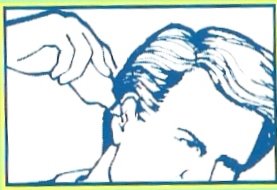But the addition of Michael Palin's "Himalaya" series has me, if nothing else, checking the TV listings. As with Palin's previous travelogues, such as "Full Circle" and "Pole to Pole", the episodes are filled with snappy narration, good humor, and an unparalleled window into places most of us only wistfully dream of visiting.
What it's lacking is this important piece of travel advice, which arrived in press release form at 19 Minutes World Media Headquarters:
squaremouth.com: It's Not When You Die, It's Where You Die!Oh boy oh boy oh boy... here come the 3 Swell Ways to Die on Vacation!
ST. PETE BEACH, Fla., June 28, 2005 -- Technically, for travel insurance, when you die matters also; however, as long as you die after you purchase your policy and before you return from your vacation, it's very definitely where you die that's going to make the difference.
[19 Minutes: Technically, it's always nice to start your press release with a complete sentence also; however, squaremouth.com definitely hasn't hired an English major to write its press releases.]
Of course, we're not dealing with the most pleasant of subjects here, but this tip is for the kids' benefit! My job is to try to educate the traveler to allow them to get the most out of their travel insurance policy, even if it's not them that's going to get it. [19 Minutes: Please welcome today's guest press release writer, former Vice President Dan Quayle!]
Where you die is going to make all the difference to the amount payable. This coverage is usually split into three areas starting with least risk/highest payout.
Air Flight Accident AD&DThis can lead to only one conclusion, which the Squaremouth folks are only too happy to offer up. Or, as they'd write, "which the Squaremouth folks is only to happy to offer up":
AD&D means accidental death and dismemberment. This allows for a payment if you happen to die or lose a couple of limbs as a result of a flight accident. Despite what you may hear on the news, this is always the lowest risk for an insurer, hence they pay the most for this benefit, up to $1,000,000 per person.
The next step down is ...
Common Carrier
This coverage pays in the event of death or dismemberment while you are traveling on any form of public transport. It is a much lower payment as the risk to the insurer is greater, usually $50,000 per person.
The third death benefit you will find on travel insurance policies is ...
Accidental Death (duration of trip)
This means the insurer will pay if you die or suffer loss of limbs during your vacation. This coverage is of course the highest risk and lowest payment, usually in the region of $10,000 to $50,000 per person.
So if you are about to shuffle off your mortal coil while walking down the high street in Grand Cayman, and you have enough strength left, struggle on to a passing bus with your last breath - your kids will thank you for it!Squaremouth.com, which, surprise(!), is a travel insurance broker, doesn't specify whether your next-of-kin should also sue the driver of the passing bus, but you can imagine they'd probably recommend it.
Here at 19 Minutes HQ, we're already envisioning an idea for our next entrepreneurial infomercial: The millions of dollars that can be made by opening travel insurance kiosks at nursing home bus stops.




No comments:
Post a Comment